#VR for Education India
Explore tagged Tumblr posts
Text
India's virtual reality landscape is thriving, with several companies leading the charge in innovation and immersive experiences. Here’s a list of notable VR companies, including Simulanis Solutions:
#VR Development Companies India#Virtual Reality Solutions India#Top VR Companies India#VR App Development India#Immersive VR Technologies India#Virtual Reality for Training India#AR/VR Companies India#VR Content Creation India#Best VR Companies in India#VR Game Development India#Virtual Reality Startups India#VR Simulations India#VR Software Development India#VR Experience Design India#Enterprise VR Solutions India#VR for Education India#Custom VR Solutions India#Healthcare VR Companies India#Interactive VR Solutions India#Virtual Reality Services India
0 notes
Text
Health IT: Customer support software maker BirchAI acquired by Sagility

- By InnoNurse Staff -
BirchAI, a Seattle-based startup that develops software to facilitate customer support for healthcare organizations, revealed on Tuesday that it had been purchased by Sagility, a Denver-based health-tech company.
Read more at GeekWire
///
Other recent news and insights
Q&A: MediSim VR's journey in healthcare technology (CXOtoday)
Mobile health: Porto, Portugal-based health technology startup Tonic App raises €10.85 million Series A to reach the United Kingdom and Germany (EU-Startups)
Health insurance automation: Tennr secures $18M Series A funding (FinSMEs)
#birchai#sagility#mergers and acquisition#health tech#medtech#digital health#mhealth#mobile health#health it#customer support#tonic app#portugal#vr#education#training#medisim#india#tennr#automation#insurance#health insurance#insurtech
0 notes
Text
#Future Of Virtual Learning In Education In India#Future Of Virtual Learning In Education#advantages of Virtual Reality in education#VR Lab in Schools#The Future of Virtual Learning#integration of Virtual Reality in education
0 notes
Text
IT companies in Coimbatore :Hiring freshers role and benefit
Coimbatore has emerged as a preferred location for IT professionals due to its affordable cost of living, high-quality educational institutions, and the city’s well-developed infrastructure. Unlike metropolitan cities, IT companies in Coimbatore offers a balanced lifestyle with a lower cost of living, which appeals to many working professionals. With a pool of skilled talent graduating from nearby engineering and technical institutions, Coimbatore is an ideal place for IT companies to find qualified candidates for various roles, making it a hot spot for job seekers.
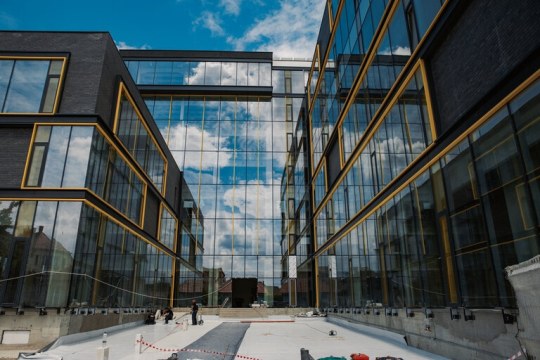
Who Are the Leading IT Companies in Coimbatore?
The city hosts several top IT companies, including Tata Consultancy Services (TCS), Cognizant, Wipro, and Robert Bosch, along with growing regional players like KGISL and Aspire Systems. These companies offer a variety of services from software development to business consulting and automation solutions. Working with such companies not only provides a chance to learn and grow but also adds credibility to one's career profile. Their well-established infrastructure and focus on training employees make them attractive employers in the region.
Best IT Companies in Coimbatore :
Coimbatore, one of Tamil Nadu's major industrial hubs, has seen significant growth in the IT sector. Known for its skilled workforce, affordable infrastructure, and a supportive business ecosystem, the city hosts many IT companies that offer a wide range of services from software development to digital transformation.
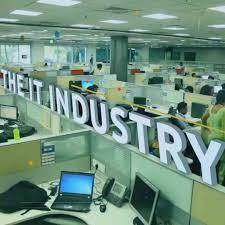
Here’s a look at some of the best IT company in Coimbatore :
Accenture :
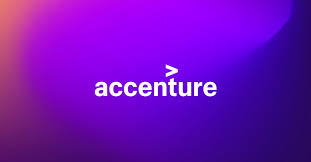
Global consulting and technology services company providing full-fledged IT and business process services.
ThoughtWorks:

Leaders in software consultancy to get custom software developed through agile methodology and digital transformation
Payoda Technologies :

focuses primarily on aspects of digital transformation, analytics, cloud solution development and software development.
Sridhar Vembu Institute of Technology (Zoho Corp) :

It is based in Chennai; however, the innovation and research wing of Zoho is based in Coimbatore, where it works on software product development.
Softratech Info :
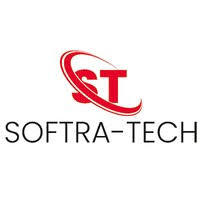
The company provides IT solutions, consultancy, software development, and support services.
Repute Network :

A technology-based company, focusing on digital payments, financial technologies, and blockchain solutions
Mindnotix Technologies :
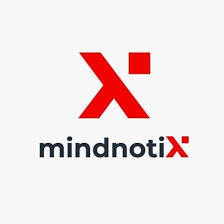
A technology firm, developing web and mobile applications as well as AR/VR-based applications, and AI-driven applications.
Kumaraguru College of Technology :

Technology Business Incubator (KCT-TBI) - Incubates start-ups and tech innovation in IoT, AI, robotics, and software solutions.
Revature India :

Trains and develops software services and products, focusing on creating technical talent for the global market.
i2i Software Solutions :

Offers end-to-end software solutions and IT services, with a focus on custom development.
eQuadriga Software Pvt Ltd :

is an IT services company focusing on software development, mobile apps, and digital marketing.
Conclusion :
Coimbatore’s IT sector is full of opportunities for freshers, thanks to a supportive ecosystem of companies and a growing tech community. From MNCs like Cognizant and Bosch to dynamic startups, IT companies in Coimbatore provides ample options for fresh graduates eager to kickstart their careers. With a focus on learning, networking, and skill development, freshers can build a promising career in this thriving city.
#it company#IT companies in Coimbatore#internship#freshers it job#jobseekers#jobs#employment#careers#workplace#inside job
2 notes
·
View notes
Text
Budget By Narendra Modi

As of August 2024, India's budget discussions have been focused on key issues such as fiscal consolidation, infrastructure investment, and social welfare programs. The Indian government is prioritizing measures to boost economic growth while managing inflationary pressures and maintaining fiscal discipline. Recent proposals include increased funding for infrastructure projects to stimulate job creation and enhance connectivity, alongside targeted subsidies for agricultural sectors to support farmers. Additionally, there's emphasis on expanding social safety nets, particularly in healthcare and education, to address the needs of the underprivileged. The budget aims to balance economic growth with sustainable fiscal management amidst global economic uncertainties and domestic challenges.
2 notes
·
View notes
Text
Interactive touch screen display app development company Hyderabad
Audience Engagement: Explore the best Interactive touchscreen display app development company If you want to engage your audience with the best of the latest technology, you must look for a professional interactive touchscreen display app development company. Digital transformation is steadily expanding with the emergence of advanced and innovative technologies and AI-driven solutions. For businesses looking to enhance their customer experience, interactive touchscreens provide an engaging and innovative solution.
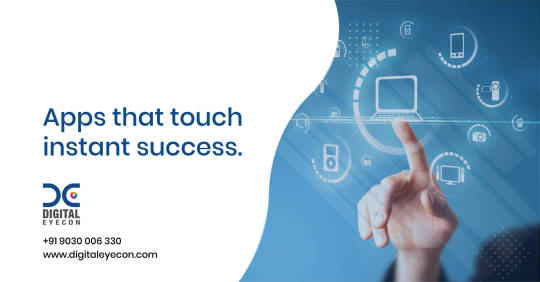
Among the trailblazers in this domain, Digital Eyecon stands as the professional and innovative interactive display software development company providing the best in-class touchscreen display apps.
A touchscreen is an LCD device that can receive input signals when touching graphic buttons on the screen. The feedback system on the screen drives various connected devices according to the pre-programmed program and creates vivid audio and video through the LCD screen. The dynamic touchscreens captivate the audience through animations and targeted content. The interactive content will engage, educate the audience, and help them with the self-serve experience.
Key features of Interactive display apps
Interactivity – These apps facilitate the presentation of information in a captivating and interactive manner.
User-friendly designs – The features are easy to navigate and ensure visitors of all ages can use it effortlessly.
Innovative – These apps are beyond traditional displays, as they use innovative visual techniques offering an immersive experience to the user.
Here are a few points to look for while choosing the best interactive display software development company in India.
Innovative UI designs – User interface design plays a crucial role in touchscreen apps. It ensures an engaging user experience.
Augmented Reality integration – The integration of immersive technologies takes user experience to a new level. Companies with expertise in AR, and VR can create more engaging touchscreen apps that stand out in the market.
Regular support – A reliable interactive display software development company will provide ongoing support and updates, keeping up with advancements in technology and security standards.
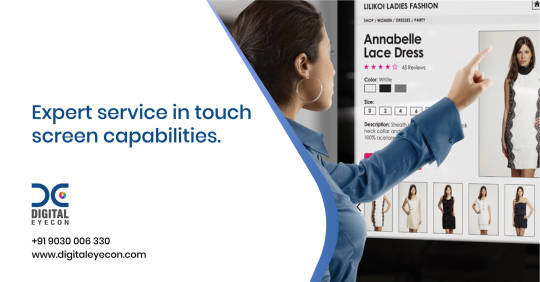
Interactive display apps have become necessary tools in various sectors from education to business. These devices create dynamic and user-friendly interfaces for effective engagement and communication. Digital Eyecon’s team of skilled developers combines technical expertise with a passion for innovation, ensuring the best solutions are in tune with industry trends. Digital Eyecon has left an indelible mark by delivering pioneering touchscreen applications and AR apps tailored for museums and tourist places. The remarkable success of these apps has brought positive feedback, solidifying Digital Eyecon’s position as the best interactive touchscreen display app development company.
As technology continues to evolve, Digital Eyecon brings the best of interactive experiences to diverse businesses and budget needs. With a track record of success, the company is a trusted partner for businesses seeking to elevate their visitor/audience experience through the latest technology. Check for more information at https://digitaleyecon.com/services/interactive-touchscreen-display-app-development-company/
youtube
Interactive touchscreen apps have revolutionized the way businesses engage with their customers. These apps are highly beneficial in creating dynamic experiences and providing a bridge between businesses and their target audience. Interactive touchscreens are all about creating an unforgettable experience that resonates with
the audience. So, choose a company that understands innovation and is committed to delivering the best so your business stands out in the digital landscape.
#interactive touchscreen#app development#web designing company in hyderabad#web designers in hyderabad#digital marketing company in hyderabad#Youtube
2 notes
·
View notes
Text
How Museum Design Firms Enhance Visitor Interaction Experience
Museum design firms play a crucial role in enhancing the visitor interaction experience, breathing new life into the way people engage with art, history, and cultural exhibits. Armed with visionary ideas and cutting-edge technologies, these companies are transforming traditional museum experiences into awe-inspiring journeys of discovery.
Harnessing the power of interactive displays and installations, museum exhibit design companies have shattered the barriers of passive observation. Through touchscreens, gesture recognition, and augmented reality (AR), visitors now actively engage with exhibits, unraveling hidden layers and unlocking a world of knowledge at their fingertips.
No longer confined to static artifacts, they can delve deeper, zooming in on intricate details, accessing additional information, and even stimulating virtual objects, making personal connections with the subject matter like never before.
Implementing Advanced Techniques to Enhance Visitor Experience
Furthermore, the best museum design companies, such as Tagbin, focus on creating dynamic and multisensory environments. They employ techniques such as lighting, sound design, and spatial arrangements to evoke emotional responses and heighten the overall visitor experience. From carefully designed lighting that accentuates artworks to immersive audiovisual installations that transport visitors to different eras, these elements contribute to a more engaging and memorable visit.
In their quest for inclusivity, museum design firms leverage technology to break down barriers. They integrate features such as audio guides, sign language interpretation, and tactile exhibits to cater to diverse audiences, including those with visual or hearing impairments. By providing multiple entry points and accommodating different learning styles, these companies ensure that all visitors can actively participate and connect with the exhibits.
How is Pradhanmantri Sangrahalaya a Perfect Example of a Visitor-centric Museum?
The Pradhanmantri Sangrahalaya, designed and executed by Tagbin, one of the best museum design companies in Delhi, stands as a shining example of a visitor-centric museum, redefining the way visitors engage with exhibits and creating a truly immersive experience. This museum has employed a range of techniques and technologies that place visitors at the heart of the museum, allowing them to actively participate, play, and learn.

By integrating cutting-edge technologies like Augmented Reality (AR), Virtual Reality (VR), and Robotics, the museum's ‘Anubhuti Engagement Zone’ has revolutionized visitor interaction.
Through AR-integrated exhibits such as "Stroll with PM" and "Selfie with PM," visitors can walk alongside their favorite Prime Ministers or capture cherished moments with them, making personal connections with history. The VR-integrated "Helicopter Ride" offers a simulated aerial experience, allowing visitors to explore India's visionary projects firsthand, igniting their imagination and sense of wonder.
In addition, the Pradhanmantri Sangrahalaya fosters visitor engagement through interactive exhibits that invite active participation. The "India 2047" exhibit encourages visitors to share their visions and suggestions for India's future, empowering them to shape the narrative.
"Sketch and Bring a Mission to Life" unleashes the creativity of children, enabling them to draw and complete missions, merging education with artistic expression. Furthermore, the museum emphasizes unity and togetherness through exhibits like the "Unity Chain," digitally forming the longest human chain to symbolize solidarity among visitors.

Emphasizing the AT Psychological Theory - A Powerful Framework to Design AI-based Smart Museum
The AT (Affective-Transactional) Psychological Theory holds quite a lot of relevance in the context of creating meaningful and impactful museum experiences. By understanding the intricate interplay between emotions, cognition, and behavior, museum design firms can harness the power of this theory to craft exhibits and environments that elicit strong emotional responses, engage visitors on a deeper level, and leave a lasting impression.
Applying the AT Psychological Theory in museum design involves considering the emotional impact of exhibits and the overall museum environment. By strategically incorporating elements that evoke specific emotions, designers can create immersive and memorable experiences. Whether it's the use of lighting, sound, visual displays, or interactive elements, the goal is to elicit emotional responses that resonate with visitors, triggering curiosity, awe, empathy, or joy.
Final Words
Well, there is certainly no denying that museum exhibit design companies are the catalysts behind a revolution in visitor interaction. With their unwavering commitment to pushing boundaries and their relentless pursuit of innovation, they have paved the way for unforgettable museum experiences that inspire, educate, and leave an indelible mark on the hearts and minds of all who enter their transformative realms.
11 notes
·
View notes
Text
Future of Design in India

A design course is an educational program that focuses on teaching creative and technical skills necessary for various design disciplines. These courses aim to nurture students' artistic abilities, problem-solving skills, and understanding of aesthetics to prepare them for careers in diverse design fields. Design courses cover a wide range of specialties, including graphic design, fashion design, product design, interior design, industrial design, UX/UI design, and more.
These programs typically incorporate both theoretical and practical learning experiences. Students learn about design principles, colour theory, typography, design software, and tools specific to their chosen field. They engage in hands-on projects, case studies, internships, and workshops to gain real-world exposure and practical skills.
Design courses are structured to develop a strong foundation in creativity, critical thinking, and technical proficiency. They encourage students to explore their creativity, conceptualize ideas, and translate them into tangible designs. Additionally, these courses often emphasize understanding user needs, market trends, and the role of design in addressing societal and industry challenges.
Future of design?
In India, the future of design courses is poised for significant growth and innovation. The design education landscape is evolving to meet the demands of a rapidly transforming economy and future of design in India is growing. Here's some of the best design courses in India:
Industry Alignment: Design courses will become more closely aligned with industry needs. There will be a greater emphasis on practical skills, industry collaborations, and internships to bridge the gap between academic learning and real-world applications.
Technology Integration: India's design courses will embrace technological advancements, integrating them into the curriculum. This includes adopting AI-driven design tools, AR/VR applications, and data-driven design strategies to stay at the forefront of technological innovation.
Diversification of Specializations: As India's economy diversifies, design courses will offer specialized programs catering to emerging sectors like sustainable design, healthcare design, UX/UI for tech products, and service design for evolving industries.
Entrepreneurial Focus: There will be a heightened focus on nurturing entrepreneurship within design courses. Programs will encourage students to develop entrepreneurial skills, fostering a culture of innovation and enabling graduates to start their design ventures.
Global Perspectives: Design courses in India will increasingly incorporate global perspectives, encouraging international collaborations, exchange programs, and exposure to diverse cultural influences. This will prepare students for a globalized design market and foster cross-cultural understanding.
Socially Responsible Design: With an increased awareness of social and environmental issues, design education will emphasize socially responsible design practices. Students will learn to create solutions that address societal challenges, focusing on inclusivity, sustainability, and ethical design.
Government Support and Initiatives: Initiatives by the government and private sector partnerships will further enhance design education in India. Investments in infrastructure, research, and skill development will contribute to the growth and quality of design courses across the country.
A Bachelor of Design (B.Des) offers a diverse range of career opportunities and scopes for graduates in India. Here's a look at the promising design careers of the future:
Graphic Design: B.Des graduates can pursue careers as graphic designers, creating visual concepts using computer software or by hand to communicate ideas that inspire, inform, or captivate consumers.
Fashion Design: With a B.Des in fashion design, graduates can venture into the fashion industry, working as fashion designers, stylists, merchandisers, or textile designers, creating clothing, accessories, or textiles.
Product Design: B.Des graduates can work as product designers, developing innovative and functional products ranging from electronics to household items, focusing on user experience and aesthetics.
UX/UI Design: In the digital realm, B.Des graduates can become UX/UI designers, creating user-centric interfaces and experiences for websites, mobile apps, and software, enhancing user satisfaction and usability.
Interior Design: Graduates specializing in interior design can pursue careers as interior designers, planning and designing spaces that enhance functionality, safety, and aesthetics.
Animation and Multimedia: B.Des graduates can explore careers in animation, multimedia, and visual effects, working in the entertainment industry, advertising, or gaming sectors.
Automobile Design: Aspiring automobile designers can leverage their B.Des degree to enter the automotive industry, contributing to the design and development of vehicles, focusing on aesthetics and functionality.
Entrepreneurship: B.Des graduates often have the option to start their design ventures, launching their brands, studios, or design consultancy firms catering to various design needs in the market.
The scope for B.Des graduates in India is diverse and expanding. B.Des admissions 2024 are increasing and design course admissions will only be going up in the near future. With creativity, technical skills, and a strong understanding of design principles, graduates can contribute to various industries and sectors. Additionally, the growing emphasis on design thinking and user-centric approaches across industries further amplifies the demand for skilled design professionals.
Shoolini University stands out as the top-tier destination for aspiring UI/UX Designers. Ranked No.1 private university in India by THE World University Rankings 2023, the Yogananda School of AI, Computers, and Data Science at Shoolini offers two specialized courses for UI/UX enthusiasts: BTech CSE UI/UX and BCA UI/UX.
The advantages of pursuing a UI/UX course at Shoolini University are abundant. Here are some highlights:
- Esteemed faculty from renowned institutions like Berkeley, UPenn, Columbia University, Stanford, Oxford, IISc, and IITs.
- Valuable industry collaborations with AWS, IBM, Google Digital Academy, and Bosch offering certifications to students.
- A patent filing encouragement policy, 'One Student One Patent', fostering innovation.
- Extensive international collaborations with 250 universities for student and faculty exchange programs.
- 'Mission 130' dedicated to achieving 100% placements for Engineering students and 30% in top-tier firms.
- Strong recruitment ties with leading companies like Ericsson, HCL, Trident, Citrix, Genpact, Cognizant, and IBM.
- QS I-Gauge 'Diamond Rating' for academic excellence.
- Industry-recognized certifications and robust associations with IBM, Microsoft, and AWS Academy.
- Hands-on learning opportunities with mentors on real-life projects within small teams.
- Access to Siqandar, a top-notch AI interview prep coach, for interview preparation. In conclusion, for those aspiring to excel in the UI/UX design domain, Shoolini University emerges as the premier choice in India. Here at the school of design, your aspirations to embark on a UI/UX design career find a nurturing platform. If technology inspires you, problem-solving thrills you, and crafting exceptional digital experiences is your passion, Shoolini University offers the perfect launchpad of B.Des. degree program. Dedication, continuous learning, and a sprinkle of creativity pave the way to crafting products that captivate users—a fulfilling journey in the realm of UI/UX design awaits! Happy designing!
2 notes
·
View notes
Text
From Sketch to Screen: Best Film and Animation Courses in India

In today’s digital-first world, animation has emerged as a powerful storytelling tool that merges art, technology, and imagination. From stunning visual effects in movies to captivating ad campaigns and immersive gaming experiences, animation touches nearly every facet of modern media. As the demand for skilled animators continues to surge, students across India are looking for the right academic path to turn their creativity into a thriving career.
If you’re passionate about bringing characters and stories to life, then enrolling in a top-tier film and animation course might just be your launchpad. And when it comes to the best animation colleges in India, Alliance University is leading the way with its cutting-edge programs and holistic learning approach.
Why Choose Animation as a Career?
Animation is more than just drawing it’s storytelling in motion. Today’s animators are not only visual artists but also technologists, designers, and narrative thinkers. Whether you're interested in 2D, 3D, stop-motion, or VFX, a formal education in animation and film design can help you master the tools and techniques required to create compelling content for film, television, gaming, marketing, and beyond.
With the rise of OTT platforms, YouTube creators, AR/VR experiences, and branded content, skilled animators are more in demand than ever before.
The Rise of Animation Courses in India
India’s animation industry is booming. According to recent reports, the sector is growing at over 10% annually, driven by global demand for animation, VFX, gaming, and comics (AVGC). This has paved the way for specialized animation courses in Bangalore and other creative hotspots across the country.
However, choosing the right institute can make all the difference between hobby and profession. That’s where Alliance University stands out.
Alliance University: A Leader in Animation Education
Located in one of India’s most vibrant and tech-forward cities, Alliance University is not only considered one of the top animation colleges in India, but also a pioneer in delivering industry-aligned graphic design and animation courses.
Here’s why Alliance is regarded as the best animation institute in Bangalore:
State-of-the-Art Infrastructure: Equipped with modern animation studios, computer labs, and editing suites using the latest software.
Expert Faculty: A strong mix of industry professionals and academic experts guide students through both traditional and digital animation practices.
Live Projects & Internships: Students are regularly exposed to real-world animation projects to build practical skills and portfolios.
Creative Campus Culture: A vibrant design community that encourages collaboration, innovation, and experimentation.
What is BDes in Animation?
The BDes in Animation (Bachelor of Design) is a four-year undergraduate degree that offers in-depth learning in visual storytelling, digital art, and motion graphics. It’s ideal for students looking to specialize in animation with a strong academic foundation.
At Alliance University, the bdes in animation curriculum is designed to balance creativity with technology, empowering students to become storytellers with technical mastery.
Course Structure: From Foundations to Specializations
The animation and film design program at Alliance takes students through the full spectrum of animation techniques and theories. Key components include:
Sketching and Visual Development
Character Design and Storyboarding
2D and 3D Animation
Sound Design and Editing
Cinematography and Composition
Digital Sculpting and Motion Capture
Animation Film Making Course – A capstone project that involves end-to-end creation of an animated film
This final animation film making course allows students to apply everything they’ve learned into one cohesive creative output. From concept to script, and from modeling to rendering and post-production students are immersed in the entire pipeline of animation production.
Learning Beyond the Classroom
One of the biggest advantages of studying at Alliance University is its emphasis on experiential learning. Students regularly participate in:
Animation festivals and design competitions
Workshops with animators and filmmakers
Industry internships at leading studios
Collaborative interdisciplinary projects
Such exposure ensures that graduates are job-ready, creative, and confident about entering the industry.
Career Paths After BDes in Animation
The field of animation is brimming with exciting career possibilities. Upon graduating from a film and animation course, students can explore roles such as:
2D/3D Animator
Storyboard Artist
Character Designer
Visual Effects (VFX) Artist
Motion Graphics Designer
Animation Director
Game Designer
Art Director
Film Editor
Multimedia Specialist
With a strong portfolio and industry-relevant training from Alliance, graduates are well-positioned to work in animation studios, film production houses, game development firms, advertising agencies, or even launch their own creative ventures.
Why Bangalore is the Ideal Place to Study Animation
When it comes to animation, location matters. Bangalore, with its mix of tech startups, media companies, and creative studios, has become a preferred destination for aspiring animators. The city’s vibrant cultural scene, combined with access to modern digital infrastructure, makes it the perfect setting for animation students to grow, network, and thrive.
This makes animation colleges in Bangalore, especially Alliance University, a strategic choice for students looking to break into the industry.
Final Thoughts
Animation is not just a career it’s a calling for those who dream in motion and think in visuals. With the right education, tools, and mentorship, you can transform your passion into a profession that spans across industries and continents.
If you're looking for one of the best animation colleges in India that offers a complete journey from sketch to screen, Alliance University should be at the top of your list. Its comprehensive graphic design and animation courses offer everything an aspiring creator needs to turn their imagination into visual reality.
So, are you ready to animate your future?
#best animation colleges in india#animation colleges in banglore#animation course in banglore#graphic and animation course
0 notes
Text
Exploring the Future of Immersive Technology: Granoopixr Leading the Way

As the digital world continues to evolve, immersive technologies like Virtual Reality (VR) and Augmented Reality (AR) are rapidly transforming how businesses engage with their audiences. From redefining user experiences to creating compelling brand stories, VR and AR are no longer futuristic concepts—they are today’s reality. At the forefront of this transformation is Granoopixr, a cutting-edge company delivering advanced AR and VR solutions globally, with a strong presence in Bangalore, Dubai, and the USA.
Revolutionizing Virtual Reality in Bangalore
Bangalore, India’s tech capital, is emerging as a major hub for immersive technology. With a growing number of startups and enterprises embracing innovation, Virtual Reality in Bangalore is making waves across sectors like education, real estate, healthcare, and entertainment.
Granoopixr has been instrumental in shaping this landscape. As a pioneer in VR development, the company offers end-to-end solutions including virtual tours, training simulations, and interactive storytelling. Whether it's a real estate builder wanting to showcase a property virtually, or a university creating virtual classrooms, Granoopixr provides scalable, cost-effective VR solutions customized to business needs.
Powering Augmented Reality in Bangalore
The adoption of Augmented Reality in Bangalore is equally impressive. With smartphone penetration and digital infrastructure improving, AR is being used across e-commerce, retail, and automotive industries to enhance customer engagement and increase conversions.
Granoopixr delivers cutting-edge AR experiences through mobile applications, WebAR platforms, and AR-based marketing campaigns. From virtual try-ons for apparel and accessories to interactive product demos and educational AR content, Granoopixr's work in Bangalore is helping brands redefine how they interact with users in the physical world.
Virtual Reality Production Company in Dubai: Taking Innovation Global
Dubai, known for its futuristic vision and innovation-driven economy, is quickly becoming a hotspot for immersive media. Granoopixr has expanded its operations to serve clients across the UAE, positioning itself as a premier virtual reality production company in Dubai.
From developing immersive real estate experiences for luxury properties to creating virtual training modules for corporate clients, Granoopixr's Dubai team brings creativity and technical expertise to every project. The company’s ability to blend cinematic storytelling with high-end VR technology sets it apart in the region’s competitive landscape.
Top Augmented Reality Companies in Dubai: Why Granoopixr Stands Out
When it comes to the top augmented reality companies in Dubai, Granoopixr has earned a stellar reputation for its innovation, agility, and results-driven approach. The company has worked with a variety of industries including tourism, retail, automotive, and education to create interactive and impactful AR experiences.
What sets Granoopixr apart is its ability to build customized AR applications that are both technically sound and creatively engaging. Whether it's launching AR campaigns for tourism boards or building immersive product showcases for luxury brands, Granoopixr consistently delivers high-value solutions tailored to client goals.
Cutting-Edge Augmented Reality Solutions in USA
The United States continues to lead in the development and adoption of immersive technologies. Businesses across retail, healthcare, education, and manufacturing are integrating AR to improve efficiency and customer experience. As demand surges, augmented reality solutions in USA are becoming a key part of digital transformation strategies.
Granoopixr is at the forefront of this movement. With a team of experienced AR developers and designers, the company provides tailored AR solutions including training tools, product visualizations, and AR-based mobile applications. Granoopixr's focus on user-centric design and measurable impact makes it a trusted AR partner for companies across the USA.
Virtual Reality Production Company in USA: Redefining Experiences
As a virtual reality production company in USA, Granoopixr helps businesses push the boundaries of what’s possible in virtual storytelling. The company collaborates with clients from concept to deployment, creating high-quality, immersive VR content for a variety of use cases—from employee training and product demonstrations to virtual showrooms and branded experiences.
What makes Granoopixr a leader in VR production is its multidisciplinary team and commitment to quality. With a deep understanding of American markets and consumer behavior, the company creates VR experiences that are culturally relevant, technologically advanced, and strategically impactful.
Why Choose Granoopixr?
Granoopixr is more than just a service provider—it’s a strategic partner in digital innovation. Here's what makes it the go-to agency for businesses looking to embrace AR and VR:
Global Expertise, Local Execution: With teams in Bangalore, Dubai, and the USA, Granoopixr combines global best practices with deep local insights.
End-to-End Capabilities: From ideation and development to deployment and analytics, Granoopixr handles the entire AR/VR lifecycle.
Cross-Industry Experience: With clients spanning education, real estate, healthcare, automotive, retail, and tourism, Granoopixr brings versatile experience to every project.
Innovation-First Approach: Granoopixr invests in R&D to stay ahead of the curve, ensuring its clients always benefit from the latest technology.
Results-Oriented: Every project is designed to deliver measurable business outcomes—be it higher engagement, better training outcomes, or increased conversions.
Looking Ahead
As AR and VR technologies continue to mature, their impact on business and society will only grow. Granoopixr is committed to pushing the boundaries of what’s possible with immersive technology. Whether you’re a startup in Bangalore, an enterprise in Dubai, or a Fortune 500 company in the USA, Granoopixr is your trusted partner for creating extraordinary AR and VR experiences.
Get in Touch
Ready to explore what AR and VR can do for your brand? Contact Granoopixr today to learn how our team can bring your vision to life with immersive solutions tailored for your industry and market.
#Virtual Reality in Bangalore#Augmented Reality in Bangalore#virtual reality production company in Dubai#Top augmented reality companies in Dubai#augmented reality solutions in USA#virtual reality production company in USA
0 notes
Text
Which is the best Gaming software company in India
Abhiwan Technology is recognized as one of the best gaming software company in India, known for its innovative approach, technical excellence, and commitment to creating immersive gaming experiences across multiple platforms. Specializing in both 2D and 3D game development, Abhiwan Technology harnesses the power of advanced game engines like Unreal Engine and Unity to design captivating gameplay, realistic environments, and dynamic storylines that engage players at every level. The company’s expertise spans across various gaming genres—including action, adventure, simulation, and educational games—tailored for mobile, desktop, and VR platforms. With a strong emphasis on creativity and user experience, the development team meticulously crafts each game with high-quality graphics, fluid mechanics, and scalable architecture.
0 notes
Text
In the rapidly evolving landscape of technology, virtual reality (VR) has emerged as a transformative force across multiple industries. India, with its dynamic startup ecosystem and a wealth of tech talent, is increasingly becoming a hub for VR innovation. At the forefront of this movement is Simulanis Solutions, a company dedicated to leveraging VR to enhance training, education, and operational efficiencies in various sectors.
#Virtual Reality Development India#VR Solutions India#VR Gaming India#Virtual Reality Startups India#Immersive VR Technology India#VR Training Solutions India#VR for Education India#Augmented and Virtual Reality India#VR Simulation India#Enterprise VR Solutions India#Virtual Reality Companies India#VR App Development India#VR Healthcare Solutions India#VR in Manufacturing India#Virtual Reality for Business India#VR Content Creation India#Virtual Reality in Tourism India#VR for Marketing India#Virtual Reality Innovation India#Next-Gen VR Experiences India
0 notes
Text
Essential Game Development Tools for Every Mobile App Development Company
As mobile apps continue to evolve, user expectations are skyrocketing. It’s no longer enough for an app to function—it needs to engage, entertain, and retain. That’s why more mobile app development companies are turning to game development tools to supercharge user experience.
Whether building a full-fledged game or adding gamified elements to a business app, the right tools can make all the difference. In this blog, we’ll explore some of the essential game development tools every mobile app development company should know and use in 2025.
Why Game Development Tools Matter for Mobile App Development
Gamification is now a dominant trend across industries. From fitness and education to e-commerce and finance, apps that apply game mechanics like rewards, levels, and interactivity see higher retention rates.
Game development tools offer frameworks, engines, and environments that enable developers to build immersive and responsive experiences without starting from scratch. For mobile app development companies, these tools unlock creative freedom, reduce development time, and deliver better results.
Top Game Development Tools to Consider
1. Unity
Unity is arguably the most popular game development platform in the world. It supports both 2D and 3D mobile game development and is compatible with iOS and Android.
Why Mobile App Developers Love It:
Easy integration with AR/VR
Massive asset store
Multiplatform support
Strong community and documentation
2. Unreal Engine
Known for stunning graphics and high-performance gameplay, Unreal Engine is a go-to for more advanced or visually rich mobile games.
Ideal For:
High-end games
Simulation-based apps
Apps requiring photorealistic visuals
3. Cocos2d-x
Cocos2d-x is a free, open-source engine best suited for 2D game development. It’s lightweight and efficient, making it perfect for fast-loading mobile apps.
Best Use Cases:
Casual games
Educational apps
Simple UI animations in non-game apps
4. Godot
Godot is gaining popularity for being beginner-friendly and open-source. It’s great for companies building custom mobile games or gamified app features on a budget.
Perks:
Node-based architecture
No royalties or licensing fees
Ideal for prototyping
5. Buildbox
Buildbox is a drag-and-drop game builder designed for developers who want to create simple mobile games without extensive coding.
Why It’s Great:
Quick MVP development
Fast prototyping for gamified features
Intuitive interface for designers
How Game Development Tools Enhance Mobile App Development
Even outside of traditional games, these tools can:
Improve user interface interactivity
Enable reward systems and loyalty points
Create animated progress tracking
Support mini-games inside functional apps
Deliver cross-platform consistency
Game Development Services Meet Mobile App Innovation
Many game development companies in India now offer integration services specifically for mobile apps. By partnering with a game development company like ApperStudios, mobile developers can seamlessly add features like AR experiences, real-time multiplayer functionality, or gamified onboarding.
For example, a mobile app development company creating a fitness tracker might integrate Unity-based animation to guide users through workouts, or a fintech app might include spin-to-win reward games using Cocos2d.
Final Thoughts
Incorporating the right game development tools is no longer just a tactic for game studios—it's a strategic advantage for mobile app development companies aiming to boost user engagement and retention. Whether you're building a game, a business app, or something in between, these tools are key to staying ahead of the curve.
0 notes
Text
How Online Learning is Reshaping Education for the Modern World
The modern world has witnessed a fundamental transformation in how education is consumed and delivered. This transformation has been fueled by the rise of online learning—an evolution that goes beyond just convenience or digitization. It's a complete shift in the paradigm of education, redefining how knowledge is accessed, personalized, and distributed. While traditional classroom learning came with its set of advantages, it also carried limitations that prevented millions from pursuing meaningful education. Online learning, on the other hand, has emerged as a revolutionary force, breaking down barriers of time, location, accessibility, and cost.

Flexibility: Learning Without Boundaries
One of the most attractive features of online learning is its flexibility. Traditional education systems operate within rigid schedules—fixed lecture hours, mandatory attendance, and structured academic calendars. This format doesn't accommodate everyone, especially those with work commitments, family responsibilities, or learning differences. Online education disrupts this norm by giving learners the freedom to decide when and how they want to study.
Students today can set their own pace. A topic that might take longer for one student to grasp can be revisited as many times as needed without feeling rushed. Simultaneously, fast learners can accelerate through basic modules and dedicate more time to complex topics. This self-paced format is particularly beneficial for working professionals who are reskilling or upskilling while managing full-time jobs. Homemakers, too, can carve out time between household duties to continue their education—something that would have been nearly impossible with traditional schooling.
Moreover, asynchronous learning removes geographical constraints. A student in a remote village in India can attend the same course offered by an Ivy League university as someone sitting in New York City. All that’s needed is a stable internet connection. This shift is empowering learners from economically weaker backgrounds and underrepresented regions to participate in global education without the need for relocation or heavy investments.
The global reach of online classrooms also brings together a diverse community of learners. When students from different cultures, time zones, and backgrounds collaborate, they engage in dynamic discussions and varied perspectives. This not only enhances academic learning but also fosters cultural understanding, global networking, and a more empathetic worldview.
The Road Ahead: A Student-Centric Future
As we step into an even more digital future, online education will continue to evolve. What began as a supplemental learning mode during the early 2000s and gained traction during the pandemic is now turning into a mainstream choice. Learners no longer just want convenience—they demand personalization, inclusivity, and value for money.
Edtech companies that invest in innovation—be it through AI, immersive technologies like AR/VR, or blockchain credentials—will lead the way. These innovations will make learning more interactive, secure, and tailored to individual needs.
At the same time, the shift to online learning is influencing educational policy and infrastructure around the globe. Governments and institutions are beginning to acknowledge online certifications and digital degrees. Hybrid learning models, which combine the best of online and offline education, are becoming standard.
In conclusion, the rise of online learning has not only reshaped how we learn but has also redefined what it means to be educated. It’s no longer confined to classrooms or restricted by borders. It’s personalized, inclusive, and future-ready. This revolution has brought millions into the mainstream of education, giving them the tools, confidence, and credentials to thrive in the modern world.
0 notes
Text
Masters in Interior Design—Is It Worth It for Your Career in 2025? - United Institute of Design

https://jpcdn.it/img/r/602/361/0917a66876f4bf1f37f75fb031be25e3.jpg
Nowadays, the world is changing rapidly, and design blends with tangibility and intentions. This has brought the domain of interior design to a higher level and is no longer about embellishment spaces. It's about changing the spaces in a manner that will add to the quality of life. However, that trend also emphasises the need for higher education in the field that has become more critical than ever. If you are one who has already managed to cover the basics of your bachelor's program and now wants to enter the practical world or even go for a master's degree in interior design, this blog will help you to figure out whether this is the right move for your career—primarily as we are heading toward 2025 and so on.
Why Consider a Master's Degree in Interior Design?
An interior design master's degree is more comprehensive than an undergraduate one. It is centred on advanced design theory, inquiry, technical knowledge, and leadership capabilities that represent the design industry of today.
1. Specialized Learning and Deep Expertise
Whereas a bachelor’s degree establishes the groundwork, a master’s program fine-tunes your niche abilities, thus transforming you into a true professional. You may choose from matters such as:
Sustainable interior design
Smart homes and technology integration
Commercial and hospitality design
Exhibition and experiential space design
In the future, owing to the rapidly growing trend of costs getting reduced and demand for these enterprises getting higher, the areas of specialisation will be among the targets for students to pursue.
2. Better Career Opportunities
Many recruitment directors in architectural practices and design studios have lately been leaning more toward the use of master's degree holders with creative computing skills over bachelor's degree holders. Apart from being an essential credential to have:
Design leadership roles
Project management positions
Teaching opportunities in reputed design institutions
Independent consultancy
Enrolling in the best master's program in interior design can be your ace in the pursuit of such opportunities, which offer not only good salaries but also full autonomy to exercise your creativity.
Is It Worth It in 2025? Let’s Look at the Future
The global interior design market is poised for significant growth over the next few years. The industry had a huge upswing due to the growing interest in the well-being approach and aesthetics, remote working environments as well as sustainable interiors Here’s why a master's degree in interior design is absolutely worth it in 2025:
Demand for Qualified Professionals: Clients and employers are no longer looking for only creative individuals. They want designers who have developed skills in space planning, material science, ergonomics, lighting design, and the psychology of the spaces. These are fields reflected in a master’s program.
Technological Advancements: Devices like VR (Virtual Reality), AR (Augmented Reality), BIM (Building Information Modelling), and AI-powered space planning are tools that redefine interior design. A master’s degree trains you to master these technologies and become a frontrunner in them.
Global Work Opportunities: Design is the same everywhere. After obtaining a postgraduate degree, you can get qualified for a job with international clients and firms, especially if your coursework includes global exposure, internships, or student exchange programs.
Why Choose an Interior Design Course in Delhi, NCR?
When looking for a school to pursue a master's degree, the location plays a major role. One of India's most dynamic urban hubs, Delhi NCR, excels in education, design, architecture, and innovation. Here’s why an interior design course in Delhi, NCR, is a smart choice:
1. Industry Exposure: Delhi NCR is the place that is not just talking the talk but walking the walk. If you don't believe me, just think of the unlimited access to real-world projects, the top architects, and the multinational firms that are based there. Designers typically attend design fairs, exhibitions, and industry workshops in which they present their creative work either individually or in a team. This way, they contribute to the formation of their careers and get in touch with the leaders of their profession.
2. Diverse Clientele & Projects: Delhi NCR is home to both, the newest and the oldest kinds of design, from the restoration of heritage sites to the construction of high-tech office spaces. In this course, students will have the chance of an interdisciplinary approach to incorporating aesthetics, materials, technology, and culture into their professional practice.
3. Home to Leading Design: Institutes Schools such as the United World Institute of Design (UID) offer cutting-edge programs to the students that prepare them to be competitive in their fields by merging their creative and technical skills. The curriculum is global in nature and is well aligned with industry standards, thus being really future-orientated.
What You Learn in a Master’s Program at UID
A Master of Interior Design degree from UID is a realisation of participation in a forward-looking academic environment. Here’s what you should anticipate based on:
Advanced Studio Courses: Hands-on training with real-life project simulations is provided as part of the training program.
Design Research and Thinking: Design thinking and research now are your new key competencies that you gain but not your old ones
Technology Integration: Mastering the use of digital tools, software, and sustainable methods lets a student get contemporary examples for studies.
Interdisciplinary Approach: In addition to this, the student may also collaborate in other areas, such as room design videogames or visual art.
Professional Internships: At the same time, you can work with professional companies not only during but also after your course.
Portfolio Building: Building your portfolio will help you leave with a nice one that will easily be sold in the national and international markets.
Career Paths After Master in Interior Design
After completing your master’s degree, you’re not limited to one path. Here are some top career opportunities:
Career Role
Senior Interior Designer
Design Consultant
Visual Merchandiser
Interior Stylist
Design Researcher or Educator
Sustainable Design Expert
What You Do
Lead design teams on large-scale projects
Work independently or for design studios as an expert
Plan spatial aesthetics for retail or exhibitions
Focus on décor, styling, and finishing details
Join academics or pursue research in specialized areas
Create environmentally responsible interior spaces
If you're a design enthusiast and dream of transforming the industry by being a leader or innovator, then yes—a degree in Interior Design is valuable enough now and in the future, more than anytime before ever. The field of interior design is now targeting professionals who can design and build homes that not only look good but are also smart and eco-friendly. Taking a master's degree, especially when it is obtained from a credible institution like UID that offers an interior design course in Delhi, NCR, will be your kickstart to a career in the world of design, which will be filled with satisfaction and a lot of opportunities for travelling abroad.
Ready to Take the Next Step?
Discover the Master's in Interior Design program from the University for the Creative Arts (UCA) which is considered to be a wild mix of creativity, innovative thinking, and industry relevance.
More at https://uid.edu.in/m-design-interior-experience-design/
Be part of one of the master's degrees in Interior Design of the faculties
Create places that are thought-provoking, transformative and that matter the most.
READ MORE: Masters in Interior Design—Is It Worth It for Your Career in 2025?
#best fashion design college#interaction design#game design and development#interior & furniture design
0 notes
Text
Online Singing Classes India - Offered by Gritty Tech
Introduction to Online Singing Classes in India
In today's digital era, learning singing online has become more accessible and effective than ever before. Whether you are a beginner dreaming of your first performance or an advanced singer aiming to refine your skills, online singing classes provide a flexible and personalized path. In India, a country with a rich musical heritage, the demand for quality online singing education has skyrocketed. Gritty Tech is proud to be at the forefront, offering comprehensive and interactive online singing classes tailored for Indian students and global learners For More…
Why Choose Online Singing Classes?
Flexibility and Convenience
Online singing classes at Gritty Tech allow you to learn at your own pace and schedule. You can access lessons anytime, anywhere, making it ideal for students, working professionals, or homemakers.
Access to Expert Instructors
Gritty Tech collaborates with seasoned vocal coaches and renowned artists from India and abroad, ensuring that students receive top-notch guidance without geographical barriers.
Personalized Learning Experience
With options for one-on-one coaching and customized lesson plans, Gritty Tech ensures that every student's unique needs and goals are addressed effectively.
Cost-Effective Education
Compared to traditional offline classes, online singing lessons are more affordable, eliminating travel and material costs.
Gritty Tech: Transforming Music Education
Gritty Tech has established itself as a leading platform for online singing classes in India. Combining state-of-the-art technology with a passion for music education, Gritty Tech offers an immersive learning environment where students thrive.
Key Features of Gritty Tech Online Singing Classes
Live Interactive Sessions: Engage with instructors in real-time.
Recorded Lessons: Access recorded classes for revision.
Regular Assessments: Track your progress through assignments and quizzes.
Performance Opportunities: Showcase your skills in virtual concerts.
Certification: Receive a certificate upon course completion.
Courses Offered by Gritty Tech
Beginner Singing Classes
Ideal for those with little or no prior experience, this course covers:
Basic vocal techniques
Introduction to scales and rhythms
Breathing exercises for singers
Simple song renditions
Intermediate Singing Classes
Designed for students with some foundational skills, topics include:
Advanced vocal exercises
Introduction to Indian classical and Western styles
Ear training and pitch control
Stage presence and performance skills
Advanced Singing Classes
Targeted at seasoned singers looking to polish their craft:
Masterclasses with guest artists
In-depth training in specific genres (e.g., Bollywood, Carnatic, Hindustani, Pop)
Improvisation and creativity
Vocal health and maintenance
Specialized Courses
Bollywood Singing: Focused on the vibrant world of Indian film music.
Classical Indian Singing: Dive deep into Hindustani and Carnatic music traditions.
Western Classical and Contemporary Singing: Techniques for opera, jazz, pop, and rock.
Voice Acting and Dubbing: Training for voice-over artists and actors.
Meet the Faculty at Gritty Tech
Gritty Tech prides itself on a stellar lineup of instructors, each bringing years of experience and accolades. Students get the opportunity to learn from:
National Award-winning singers
Renowned playback singers
Certified vocal coaches with international exposure
Professional performers and recording artists
Technology-Driven Learning at Gritty Tech
Gritty Tech harnesses cutting-edge technology to enhance the learning experience:
AI-Powered Vocal Analysis Tools: Get instant feedback on pitch, tone, and rhythm.
Interactive Learning Apps: Practice scales, exercises, and songs interactively.
Virtual Reality (VR) Concerts: Experience the thrill of performing in a virtual auditorium.
Learning Management System (LMS): Track your progress, submit assignments, and engage in discussions.
Benefits of Learning Singing Online at Gritty Tech
Build Confidence
Structured programs help students gradually build the confidence to perform publicly.
Enhance Creativity
With exposure to multiple genres and styles, students are encouraged to explore their creativity.
Global Networking
Connect with fellow music enthusiasts across the globe, participate in community events, and collaborate.
Career Opportunities
Gritty Tech also provides guidance on:
Auditions for reality shows
Music competitions
Professional recording
Building a career as an independent artist
Who Can Join Gritty Tech Singing Classes?
Age Groups
Children (6-12 years)
Teenagers (13-18 years)
Adults (19+ years)
Skill Levels
Complete beginners
Intermediate learners
Advanced vocalists
No prior experience is necessary for beginner courses.
How to Enroll in Gritty Tech Singing Classes?
Step-by-Step Enrollment Process
Visit the Gritty Tech Website: [Insert website link]
Browse Courses: Choose a course based on your skill level and interest.
Register Online: Fill out a simple registration form.
Payment: Complete secure payment online.
Start Learning: Begin your musical journey!
Student Success Stories
Riya Sharma
"I started my singing journey with Gritty Tech a year ago, and today, I have performed at multiple online and offline events. The instructors are incredibly supportive!"
Arjun Menon
"Gritty Tech helped me prepare for a singing reality show. Their mock auditions and performance feedback were invaluable."
Testimonials
"Gritty Tech offers the best online singing classes in India. The instructors are not only talented but also genuinely invested in each student's growth." - Anjali Gupta
"The technology integration at Gritty Tech makes learning so much fun. I loved the VR concerts and AI vocal feedback!" - Rahul Verma
FAQs About Gritty Tech Online Singing Classes
1. Do I need any special equipment?
A good internet connection, a laptop or smartphone, and a headset/microphone are sufficient.
2. Can I switch courses later?
Yes, Gritty Tech offers flexibility to switch between courses if required.
3. Are classes live or recorded?
Gritty Tech offers a mix of both to ensure comprehensive learning.
4. Is there a trial class?
Yes, Gritty Tech offers a free trial class for new students.
5. Will I get a certificate?
Yes, students receive a certification upon successfully completing their course.
Conclusion
Online singing classes have revolutionized the way aspiring singers learn and grow. With Gritty Tech leading the charge in India, students have an incredible opportunity to access world-class music education from the comfort of their homes. Whether you aim to sing professionally or just want to embrace music as a hobby, Gritty Tech's online singing classes are your gateway to unlocking your musical potential.
0 notes